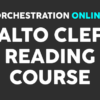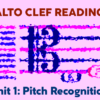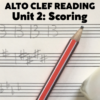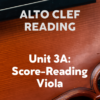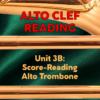Saturday, 25 January
7:30 p.m. It’s been a sluggish couple of days, but not without results. I started scoring Mel C’s version of “Both Sides Now” yesterday and finished it today. I don’t know if anything I ever do is perfect, but this score was as close to perfection as I’ve gotten so far, at least on this project.
The scoring plan was fairly deliberate: I started with about a dozen bars copying the live chamber strings version as closely as possible. Then I opened things up a bit as the verse developed, capping things off with a spacious, misty chorus. Since the song has a three-part structure, I made things progressively more lush and full with each verse and chorus, and then pulled back at the end to finish with an arrangement very much like the source recording. So Mel C will be shepherded very gracefully into a more soaring, generous arrangement, then brought back home to where she’s familiar at the end.
The unique feature of this particular song was that it was the only one that had neither central groove like Tubular Bells nor any band to compete with like all the other songs. All I had to do was to support and counterpoint the vocals and piano with the orchestra. The immediate, obvious consequence of such freedom for the crossover orchestrator is subtlety of dynamics. Instead of constantly judging how loud the orchestra will sound around a band with drums, bass, guitars, and keys, I was liberated to having real surges, releases, shadings, and a pianissimo here and there. And I could have some confidence that these touches will be heard and (hopefully) appreciated on their own merits, not in context of the originally recorded version.
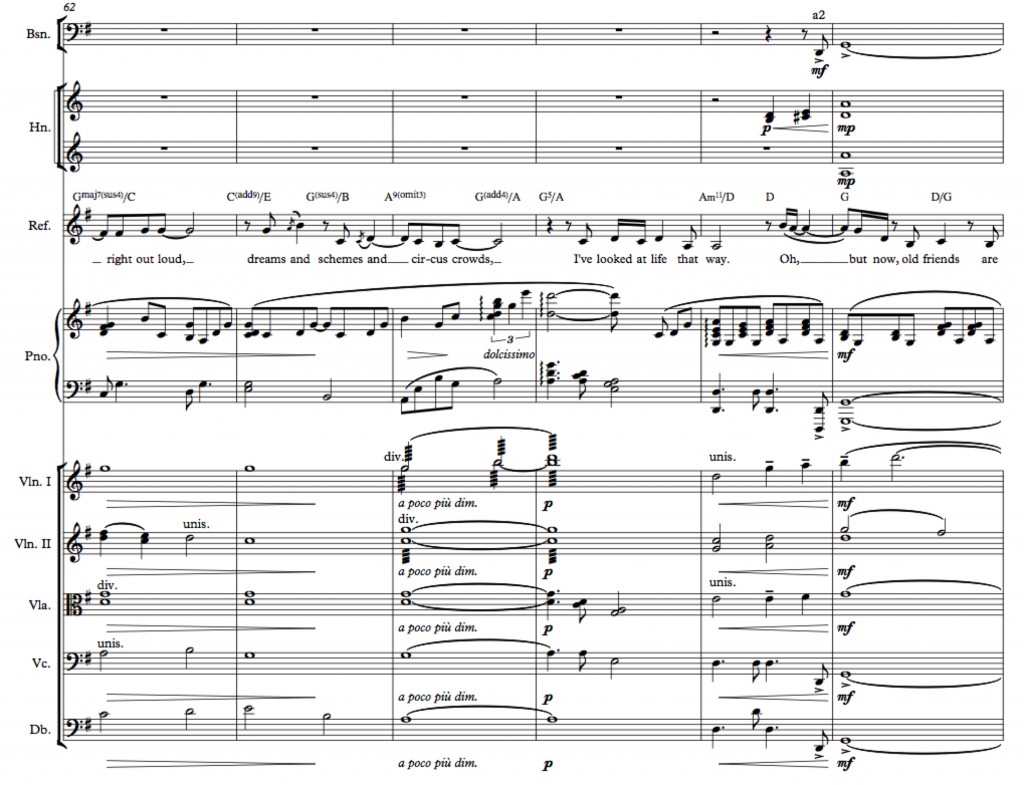
With that kind of focus on the orchestra, I could lead the end of each chorus back to the next verse with a wind solo: oboe for the end of the first chorus, flute for the second, and clarinet for the third leading to a repeat chorus. These weren’t exercises in agility, mind you, but long lingering tones that hung over the warm, slowly shifting strings. If my devious plan works, these little solos will also prep the artist for the mood and meaning of each subsequent arc of singing. Here’s where it helps to have trained vocally on and off for about 12 years. You never understand until you yourself are behind that mic that the singer has to live the emotion of the song inside themselves every time they commit fully to its performance. Then as an orchestrator, you can work out ways to open the pathway for that journey, so the singer can really give themselves to it.
I’ll leave a full page below for study. Note the simple yet effective doublings. I only use one each clarinet and oboe for this orchestration. My favorite part is that 2-bar ascension at bar 51 of ascending 7th chords voiced over the third – I added a little cinematic flurry in the strings of trills at the start in the firsts, tremolo in the seconds and violas. This is the kind of thing that sounds dumb with Sibelius playback, but magical with real instruments.
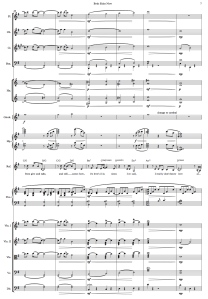
I feel I really passed some milestones in the past week – the song with the most rock history (Leo Sayer’s “More Than I Can Say”), the fastest song to arrange (Sharon Corr’s “We Could Be Lovers”), the longest and hugest (Billy Ocean’s “When the Going Gets Tough”), and the most sensitive and fully orchestral (Mel C’s “Both Sides Now”). The end is in sight. Only two more songs to go, one a straight ballad and the other a folk-rock instrumental. That’s unless I get assigned even more, the door to which I’ve left wide open.
I like to start a day’s scoring with a fully notated and chord-symboled reference staff, and there’s even a chance I might get all of that done this evening, so I’ll get back to that now, and see how things go in the morning.

